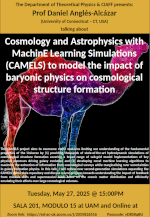The CAMELS project aims to overcome major obstacles limiting our understanding of the fundamental properties of the Universe by (1) providing thousands of state-of-the-art hydrodynamic simulations of cosmological structure formation covering a broad range of sub-grid model implementations of key physical processes driving galaxy evolution and (2) developing novel machine learning algorithms to maximize the extraction of information from cosmological surveys while marginalizing over uncertainties in galaxy formation physics. In this talk, I will review new second-generation simulations expanding the CAMELS public data repository and discuss recent progress towards understanding the impact of feedback from massive stars and supermassive black holes on the cosmic matter distribution and efficiently emulating their effects over large cosmological volumes.

